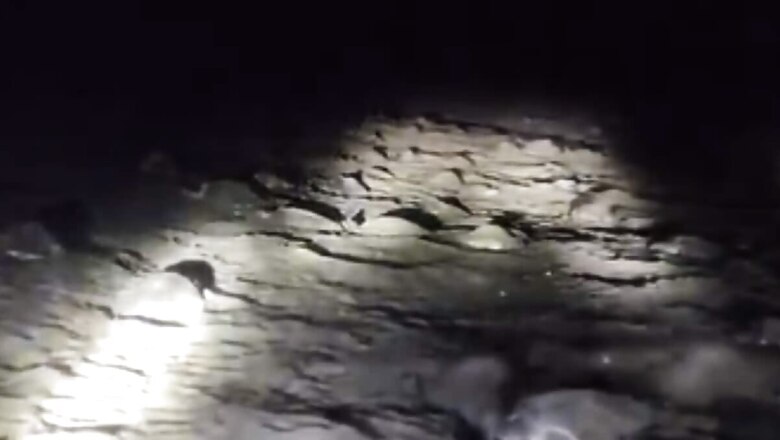
views
Every year, the olive ridley sea turtles make their way to Odisha’s Gahirmatha beach for mass nesting. According to The Statesman, this year, their arrival was delayed by a month, reportedly due to the unsteady sea and spells of unseasonal rain. The turtles chose the Gahirmatha Beach due to its unique topography that keeps the beach safe from erosion by waves. It is believed to be the world’s largest-known nesting ground of olive ridley turtles. All species of sea turtles in India, including the olive ridley turtles, are protected under Schedule I of the Wildlife Protection Act, 1972, which bans their hunting, domestication, or trade.
On Wednesday, IFS officer Susanta Nanda shared a video that captures the turtles climbing up the beach at night. He wrote, “The splendid phenomenon of mass nesting of Olive Ridley sea turtles at Gahirmatha has begun. Lakhs of them will be visiting our beach to lay eggs in the next couple of days. The department is fully geared up to ensure safety of our annual visitors.”
May the phenomenon continue for ever.— Lala Aswini K Singh (@Lala_Aswini) April 4, 2024
Commenting on it, an X user wrote, “May the phenomenon continue forever.” People also noted how the beach was entirely dark and did not have artificial lights around which often ends up distracting the turtles who are innate attracted to light sources. Making this observation, an X user wrote, “Great to see no artificial lights around, great job.”
Great to see no artificial lights around ,great job— Subhajitwild (@subhajitreehug) April 3, 2024
The female turtles invade the Gahirmatha beach for nestling between February and March. Each turtle typically lays 120–150 eggs, in conical nests that are dug 1.5 feet deep. The nestling process takes place over three to 10 days. After laying the eggs, the female turtles return to the sea. The hatchlings emerge after 45 to 60 days and soon make their way to the ocean in the night as they follow the light reflected on the ocean’s surface.
The olive ridley sea turtles are categorised as Vulnerable in the International Union for Conservation of Nature (IUCN) Red List. Every year, the government employs a series of measures to make sure the turtles nesting, hatching, and return to the ocean happens smoothly.
The Gahirmatha coast is deemed a “marine sanctuary”. It has a blanket ban on sea fishing all year round. The coast guards and forest department officials keep an eye on the coast to make sure that the nesting grounds are not disturbed. Additionally, to prevent the accidental entrapment of turtles in fishing nets, the Odisha Government has made it mandatory for mechanised fishing trawlers to use Turtle Excluder Devices or TEDs. It is a specially designed net that comes with an exit cover which retains the catch but the turtles to escape.




















Comments
0 comment